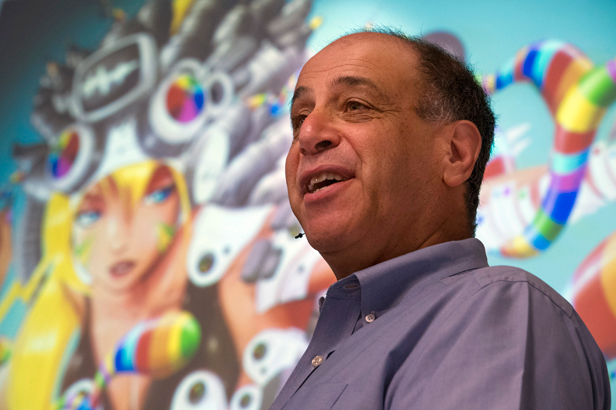Why a High-End Software Maker Pursues App Companies

Socialcam was a hot startup with a simple app that lets people quickly shoot and edit videos on smartphones and share the clips with friends. That might have made it a natural target for a company like Google or Facebook or Apple trying to keep up in social networking (see “What’s the Next Instagram?”). But Socialcam was instead recently bought for $60 million by Autodesk, a company better known for expensive software used by architects, product designers, and Hollywood animators.
Why would Autodesk, a company that had $2.2 billion in revenue last year, care about a cute social app that people can get for free? Because selling expensive software to businesses, lucrative as it may be, is becoming a less reliable way of staying on top of trends in computing. As employees use tablets and smartphones both at home and work, and as desktop software moves to the Web, the lines between consumer and business customers are blurring.
Autodesk launched a consumer division less than three years ago, and soon created SketchBook, its own mobile drawing and painting app that became a hit (see “How Autodesk Disrupted Itself with An App”). Since then, Autodesk’s CEO, Carl Bass, has worked to attract even more consumers, including by buying the how-to website Instructables and the photo-editing app Pixlr. This year, to round out its offerings, it also launched a consumer-friendly version of its 3-D simulation software called 123D. The suite of apps lets users render a 3-D model of a subject using a smartphone camera, edit or “sculpt” it, and then print the file to a 3-D printer or laser cutter. Then came this summer’s Socialcam acquisition.
Bass has pursued such deals to broaden the company’s user base even though these consumer products bring in less than 2 percent of Autodesk’s revenue—a ratio unlikely to change. Autodesk’s consumer offerings are either free and supported by advertising, or they cost one or two dollars to purchase in app stores, while its typical software packages retail for thousands. The reason for pursuing these app-focused revenue streams, Bass says, is that the consumer products help Autodesk to innovate faster and better. Historically, IT innovation started in big organizations, such as the military and large companies, and trickled its way down. But today, Bass argues, software trends are starting at the level of individual users—especially with the proliferation of mobile app stores that make thousands of offerings available. Apps, he adds, also require a faster development style and a simpler learning curve than Autodesk’s traditional software business.
Mastering that will help Autodesk as it makes all of its software, including its flagship product AutoCAD, more collaborative and mobile. Bass believes Autodesk’s most serious threats today are not from its traditional competitors, but from smaller companies that might quickly take advantage of a new technology platform or business model and have, as Bass points out, “nothing to lose.”
One aspect of the app revolution still surprises Bass, however. “I get more mail from people who have bought SketchBook and Pixlr for 99 cents than some of our $5,000 applications,” he says. “The letter always starts: ‘Dear Mr. Bass, I paid 99 cents for SketchBook and when I did, I expected it would have this filter or do this.’ I rarely get that around our $5,000 professional products. For 99 cents, people feel very entitled.”
Keep Reading
Most Popular
Large language models can do jaw-dropping things. But nobody knows exactly why.
And that's a problem. Figuring it out is one of the biggest scientific puzzles of our time and a crucial step towards controlling more powerful future models.
How scientists traced a mysterious covid case back to six toilets
When wastewater surveillance turns into a hunt for a single infected individual, the ethics get tricky.
The problem with plug-in hybrids? Their drivers.
Plug-in hybrids are often sold as a transition to EVs, but new data from Europe shows we’re still underestimating the emissions they produce.
Stay connected
Get the latest updates from
MIT Technology Review
Discover special offers, top stories, upcoming events, and more.